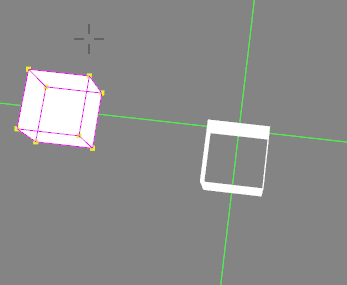Project Overview
“The future of graphics lies in the power of 3D rendering.”
The 3D Renderer project is an exciting exploration of the world of 3D rendering, conducted by a team of three members at Université Laval. We are utilizing OpenFrameworks with the C++ programming language to deepen our knowledge in the field of graphical rendering.
Throughout this project, we focus on harnessing the capabilities offered by OpenFrameworks, with a particular emphasis on utilizing the GPU and shaders. This allows us to create richer visuals and optimize performance in our application.
Key Features
- GPU Utilization: We are leveraging the power of the GPU to enhance rendering performance and quality.
- Shader Implementation: Our focus on shaders enables dynamic and realistic visual effects, adding depth to our rendering capabilities.
- Illumination Techniques: A significant area of learning has been the implementation of various illumination techniques, which play a crucial role in achieving realistic lighting effects in our scenes. We explored methods such as ambient, diffuse, and specular lighting to enhance the visual realism of our rendered objects.
- Rasterization Process: We adopted rasterization as our primary rendering technique, converting 3D models into a 2D image through a process that involves projecting 3D coordinates onto a 2D plane and determining pixel color based on light interactions and textures.
Development Process
Our development process is centered on exploration and discovery, seeking to leverage the latest advancements in 3D rendering techniques. We are committed to an experimental approach, allowing us to learn and adapt as we progress.
Technologies Used
- OpenFrameworks: A powerful toolkit for creative coding that supports various rendering techniques.
- C++: The programming language used for developing the core rendering engine.
- Shaders: Implementing vertex and fragment shaders to enhance visual effects.
Skills Applied
- 3D Graphics Design: The project requires a solid understanding of 3D graphics principles and rendering techniques.
- GPU Programming: We are enhancing our skills in programming for the GPU, improving our knowledge of parallel processing.
- Illumination and Rasterization: Learning and implementing advanced illumination models and mastering the rasterization process have been critical in achieving high-quality renders.
- Collaboration: Working as a cohesive team, we are sharing responsibilities and learning from each other’s strengths.
Challenges and Solutions
-
Challenge: Understanding and implementing complex shader techniques can be daunting.
- Solution: We are iteratively exploring shader examples and adapting them to our needs, facilitating a learning process.
-
Challenge: Ensuring compatibility and performance across different hardware configurations.
- Solution: We are conducting performance tests on various systems to optimize our rendering engine accordingly.
-
Challenge: Achieving realistic illumination effects while maintaining performance.
- Solution: By implementing efficient lighting algorithms and optimizing shader calculations, we managed to strike a balance between visual fidelity and performance.
Results and Learnings
The 3D Renderer project is helping us successfully demonstrate a graphics system capable of advanced rendering techniques. This project is strengthening our understanding of OpenFrameworks, GPU programming, shader implementation, illumination, and rasterization. It also highlights the importance of teamwork and collaboration as we tackle complex technical challenges together.
We are learning valuable lessons in graphics programming, system integration, and collaborative development, which we can apply to future projects.
Next Steps
- Enhancement of Rendering Techniques: Explore more complex rendering techniques, including advanced shading models and post-processing effects.
- User Interaction: Develop features that allow users to interact with rendered scenes in real time.
- Performance Optimization: Continue to refine our rendering engine for better performance across different platforms.
Presentations
For an overview of the project, you can watch our presentation videos here:
